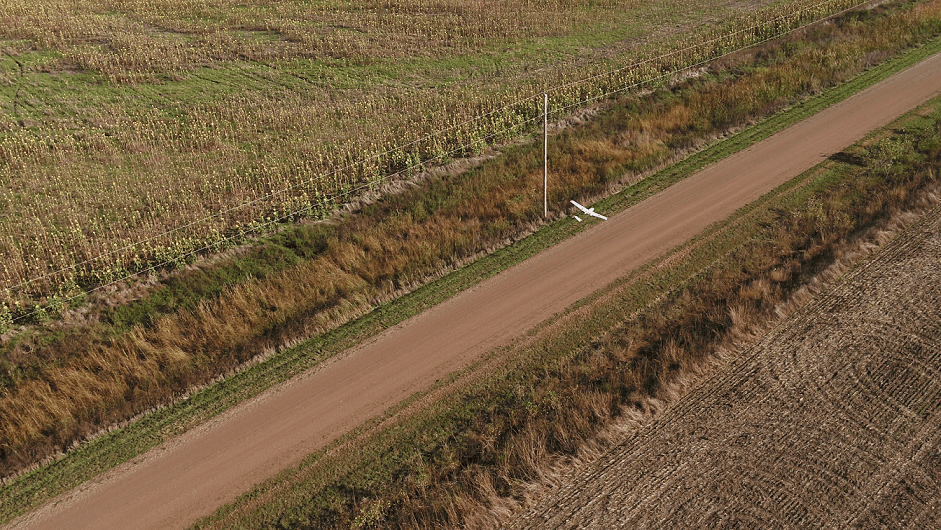
Powered by Iris Automation’s onboard detect-and-avoid system, the first FAA-approved ‘true BVLOS’ drone flights took place last week in Kansas. (Iris Automation)
The Kansas Department of Transportation, working with Iris Automation and Evergy Power, successfully completed the first beyond visual line-of-sight (BVLOS) drone operation using only onboard detect-and-avoid systems.
This marks the first FAA-authorized BVLOS flight without a requirement for expensive ground-based radar systems or visual observers. Waivers for the flights were first obtained this past summer but didn’t take place until November due to extreme weather in Kansas and scheduling logistics.
Over the course of two days, teams from Kansas State University Polytechnic Campus and Iris completed more than 150 miles of power line inspection Evergy Inc., the state’s largest energy provider, spread over seven BVLOS flights.
“This marks the first true BVLOS flight in the nation and is a tremendous milestone for the drone industry,” said Iris Automation CEO Alexander Harmsen. “We see this as one of the most notable accomplishments to come from the IPP program to date. We’re thrilled to set the precedent and bring our industry’s utilization of drones from dream to reality.”
Iris’ Casia system provides drones with onboard automated detect-and-avoid capability, using AI and computer vision to build a constantly-updated vision of the world around the aircraft that recognizes nearby potential threats and chooses an appropriate response from a pre-set dictionary of safe maneuvers.
This capability has tremendous potential for companies like Evergy with linear infrastructure — power lines, pipelines and similar — spread across hundreds or even thousands of miles that could be inspected by unmanned aircraft more cheaply and more often to prevent disruptions of service.
Currently, Evergy’s inspections mostly require manned aircraft operations supplemented with drones flown within line of sight, according to Mike Kelly, senior UAS coordinator at the company.
“Developing the ability to use UAS beyond line of sight has potential to make our operations safer and more efficient, saving money for our customers,” Kelly told Avionics International. “Use of UAS also provides a significant improvement in safety and better data quality and retention when compared to traditional means of inspection. Better data can help drive a more proactive maintenance strategy that can lead to fewer unplanned outages and make our business more efficient.”

Equipped with Iris’ Casia system, this drone can see the world around it in real-time and react to any incoming objects in the sky. (Iris Automation)
Evergy is building out an internal drone program tasked with applying the technology to all areas of its business, according to Kelly. He envisions large-scale industrial utilization of drone technology in a way that the industry has been striving to achieve for years. With achievable BVLOS flight enabled solely by onboard systems, that day may finally be on the horizon.
“We are in the process of securing a dozen other BVLOS waivers with our customers in the US, Canada, and India and recently secured a waiver in South Africa,” Harmsen said. “The FAA continues to issue more waivers and to push the boundaries of previous waiver limitations. We have every confidence that this progress will continue and more BVLOS waivers will be granted in the US and around the world from other Civil Aviation Authorities.”
KDOT’s flights enabled by Iris’ technology didn’t involve the use of ADS-B Out or any communications with air traffic control beyond a LAANC approval for flights near airports, according to Iris.
CORRECTION: Iris’ director of flight ops clarified that 150 miles of BVLOS inspection took place over seven separate flights, not five as originally stated.
 | Don’t miss a beat on urban air mobility and eVTOL aircraft development. Sign up for our brand new e-letter, “The Skyport,” sent to inboxes every other Thursday with all the latest news, analysis and insider scoops. |